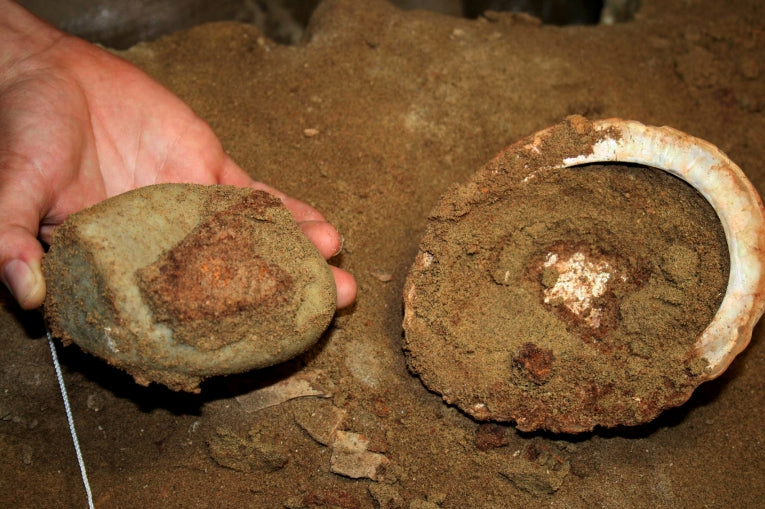Cape Town has been the focus of many ethnic groups over the years. 100,000 years ago, during the Middle Stone Age, a processing workshop was set up 300 km east of the modern settlement. The journal Science published the results of Professor Christopher Henshilwood's investigation of this workshop on Friday. It consists of two abalone shells, filled with an ochre rich mix, found in the Blombos Cave. Ochre is basically a red rock, rich in iron oxides.
The Institute of Human Evolution at the University of the Witwatersrand in Johannesburg discovered the workshop in 2008. In the dating of the finds, Prof. Henshilwood used Optically Stimulated Luminescence (OSL) dating. This was only possible because the artifacts were found exactly as the craftsmen or women left them in the cave. No sunlight had affected the quartz, which needs to release electrons from its lattice structure in order to date the rock. He explains the importance of the find. "This discovery represents an important benchmark in the evolution of complex human cognition (mental processes) in that it shows that humans had the conceptual ability to source, combine and store substances that were then possibly used to enhance their social practices."
The workshop really involved complex knowledge of aspects of chemistry at this date. Pieces of the ochre seem to have been rubbed on quartzite slabs to manufacture a fine red powder. Chips of the ochre were crushed with hard grinders and mixed with bone, charcoal, stone chips and some liquid and gently stirred in the actual shells found. The stirrer was probably a bone, also used to dispense the mixture.

These artifacts (above) from "Toolkit 1" are not described in detail, but can be recognised in some cases. Image: The Blombos Cave ochre toolkit. Credit: © Prof. Chris Henshilwood, University of the Witwatersrand, Johannesburg
Recovery of the "kits" associates early human technical and behavioural skills with the planning and production procedures needed for this decoration procedure that seems to be indicated. Its use would have been for skin make-up or clothing, for symbolic reasons or not. The long term planning involved in gathering all of the ingredients cannot be ignored, either, according to Chris Henshilwood. He himself has certainly been busy planning the careful treatment of this unique set of artifacts. More of the same would be nice, but this could remain a priceless insight into our ancestors' minds and abilities because of its unique location and its very careful analysis.
Video Credit: Credit: Prof. Chris Henshilwood, University of the Witwatersrand, Johannesburg










